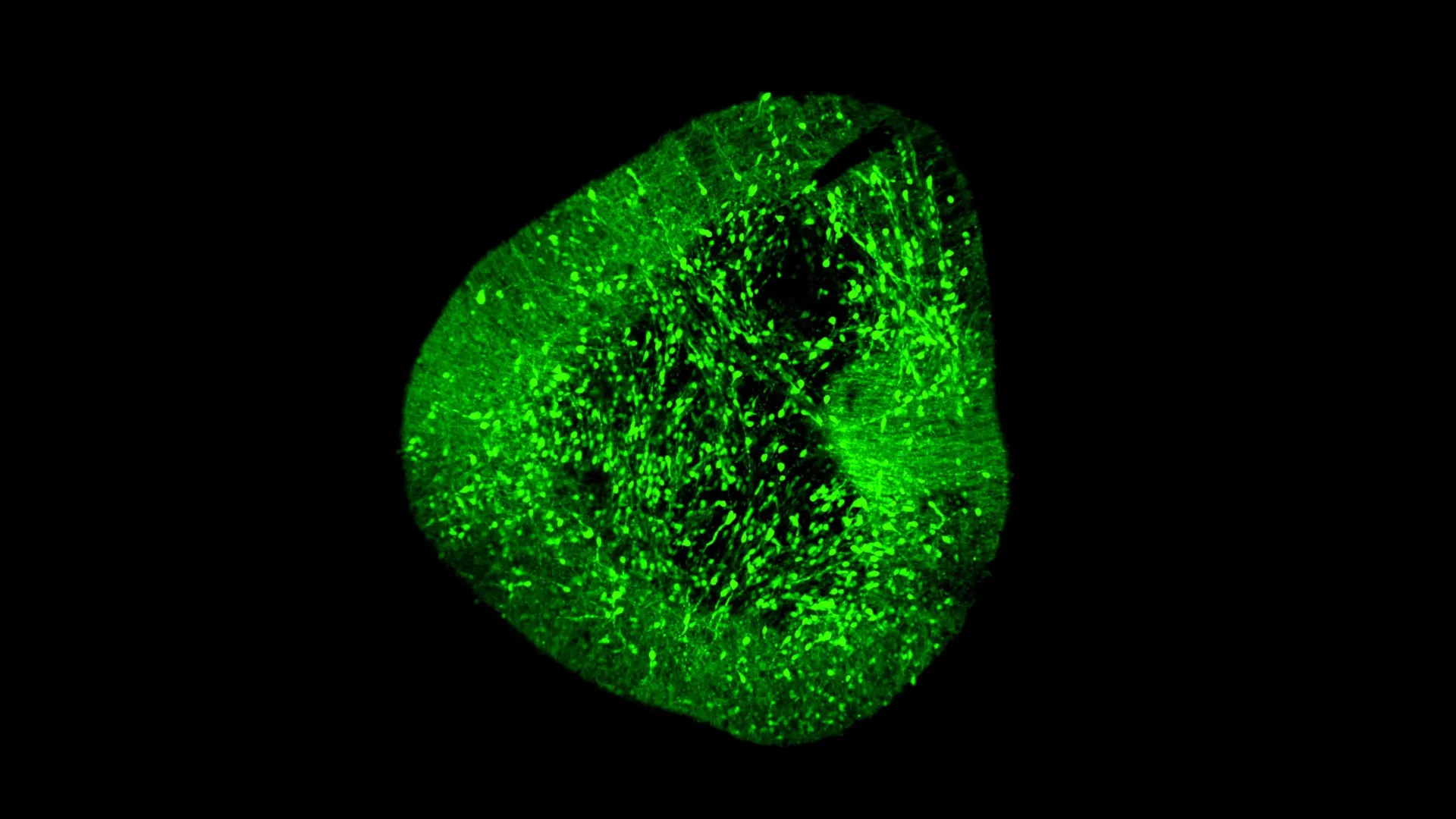A groundbreaking brain map could revolutionize Parkinson’s treatment
Scientists have built an unprecedented single-cell atlas of the developing human brain, mapping nearly 680,000 cells to understand how neurons form and function.
- Date:
- November 3, 2025
- Source:
- Duke-NUS Medical School
- Summary:
- Duke-NUS scientists unveiled BrainSTEM, a revolutionary single-cell map that captures the full cellular diversity of the developing human brain. The project’s focus on dopamine neurons provides crucial insight for Parkinson’s treatment. Their findings reveal flaws in current lab-grown models while offering a precise, open-source standard for future research. It’s a leap toward more accurate brain modeling and powerful cell-based therapies.
- Share:

Scientists at Duke-NUS Medical School and partner institutions assembled one of the most complete single-cell maps of the developing human brain. The atlas identifies nearly every cell type, records their genetic signatures, and shows how these cells grow and interact. It also compares leading laboratory methods for producing high-quality neurons, advancing efforts to develop new therapies for Parkinson's disease and other brain disorders.
Parkinson's disease is Singapore's second most common neurodegenerative condition, affecting about three in every 1,000 people aged 50 and above. The disorder harms midbrain dopaminergic neurons, which release dopamine to regulate movement and learning. Restoring these neurons could eventually ease symptoms such as tremors and difficulty with mobility.
To clarify how dopaminergic neurons form in laboratory settings, the team created a two-step mapping approach called BrainSTEM (Brain Single-cell Two tiEr Mapping). In collaboration with partners including the University of Sydney, they profiled nearly 680,000 cells from the fetal brain to chart the full cellular landscape.
A second, higher-resolution projection targets the midbrain with added precision and pinpoints dopaminergic neurons. This "comprehensive reference map" now serves as a global standard for evaluating how accurately midbrain models match real human biology.
Dr. Hilary Toh, an MD-PhD candidate from the Neuroscience & Behavioural Disorders program at Duke-NUS Medical School and one of the first authors of the paper, said:
"Our data-driven blueprint helps scientists produce high-yield midbrain dopaminergic neurons that faithfully reflect human biology. Grafts of this quality are pivotal to increasing cell therapy efficacy and minimizing side effects, paving the way to offer alternative therapies to people living with Parkinson's disease."
Published in Science Advances, the study reports that several methods used to grow midbrain cells also generated unwanted cells originating from other brain regions. These findings indicate that both experimental protocols and data analysis pipelines need refining to detect and remove such off-target populations.
Dr. John Ouyang, Principal Research Scientist from Duke-NUS' Centre for Computational Biology and a senior author of the study, said:
"By mapping the brain at single-cell resolution, BrainSTEM gives us the precision to distinguish even subtle off-target cell populations. This rich cellular detail provides a critical foundation for AI-driven models that will transform how we group patients and design targeted therapies for neurodegenerative diseases."
Assistant Professor Alfred Sun from Duke-NUS' Neuroscience & Behavioural Disorders programme, who's also a senior author of the paper, added:
"BrainSTEM marks a significant step forward in brain modelling. By delivering a rigorous, data-driven approach, it will speed the development of reliable cell therapies for Parkinson's disease. We're setting a new standard to ensure the next generation of Parkinson's models truly reflects human biology."
The researchers will release their brain atlases as open-source references and provide the multi-tier mapping approach as an out-of-the-box package. Because BrainSTEM can be applied to isolate any cell type in the brain, labs worldwide can use it to deepen insight, streamline workflows, and accelerate discovery across neuroscience.
Professor Patrick Tan, Senior Vice-Dean for Research at Duke-NUS, said:
"This study redefines the benchmark -- establishing multi-tier mapping as essential for capturing cellular detail in complex biological systems. By revealing how the human midbrain develops in such detail, we will accelerate Parkinson's research and cell therapy, delivering better care and offer hope to people living with the disease."
This work received support from programs including the USyd-NUS Ignition Grant and the Duke-NUS Parkinson's Research Fund through a generous donation by The Ida C. Morris Falk Foundation.
Duke-NUS remains a leader in medical research and education, committed to improving patient care through scientific innovation. The study advances ongoing efforts to understand fundamental brain mechanisms and to develop new therapeutic strategies for neurological conditions.
Story Source:
Materials provided by Duke-NUS Medical School. Note: Content may be edited for style and length.
Journal Reference:
- Hilary S. Y. Toh, Lisheng Xu, Carissa Chen, Pengyi Yang, Alfred X. Sun, John F. Ouyang. BrainSTEM: A single-cell multiresolution fetal brain atlas reveals transcriptomic fidelity of human midbrain cultures. Science Advances, 2025; 11 (44) DOI: 10.1126/sciadv.adu7944
Cite This Page: